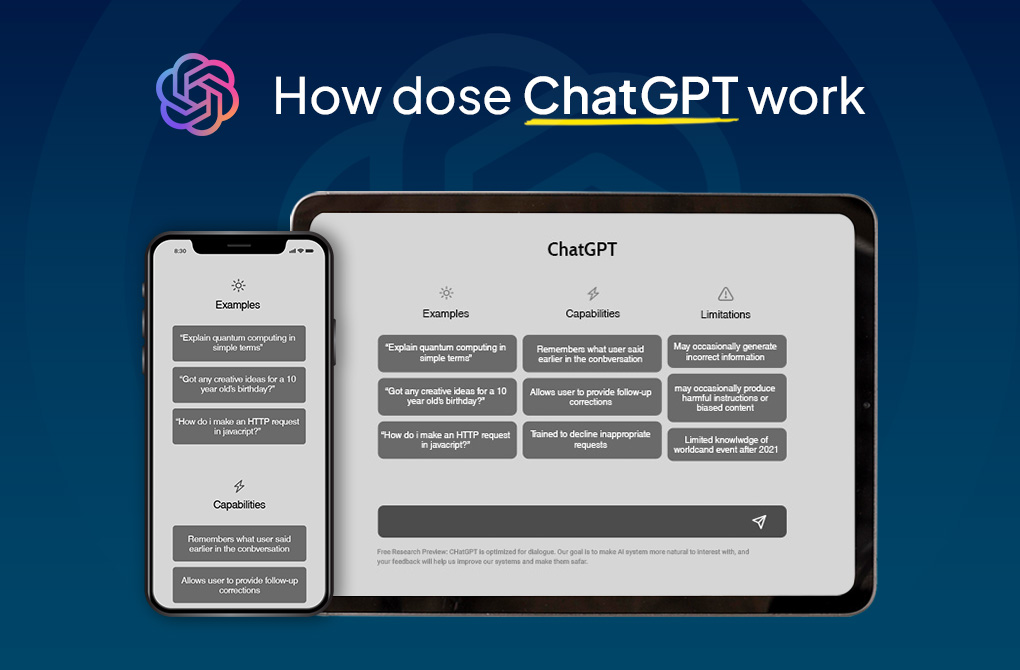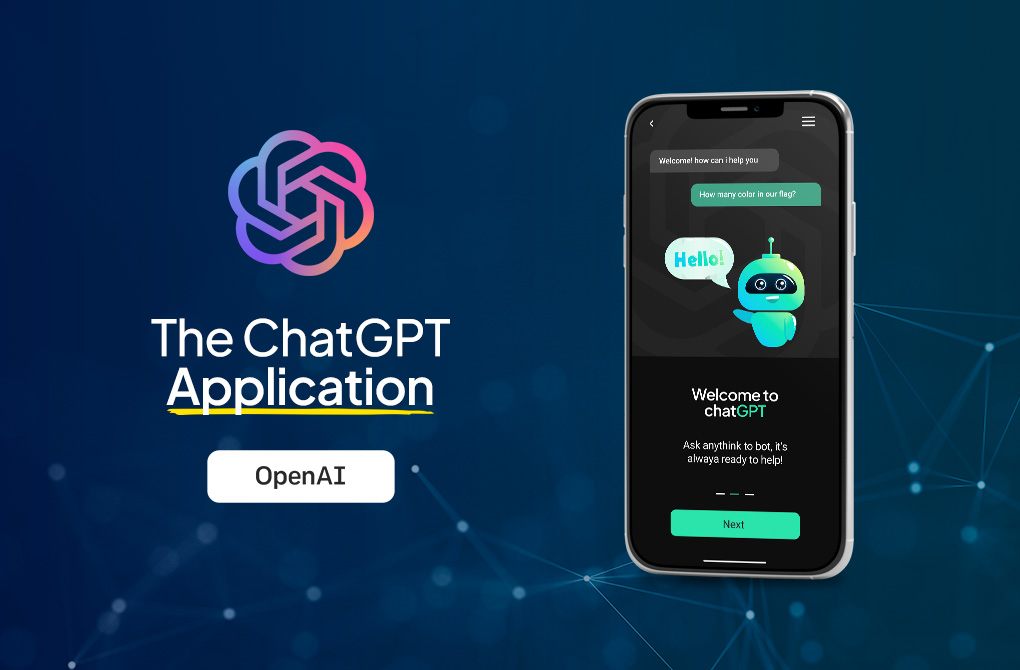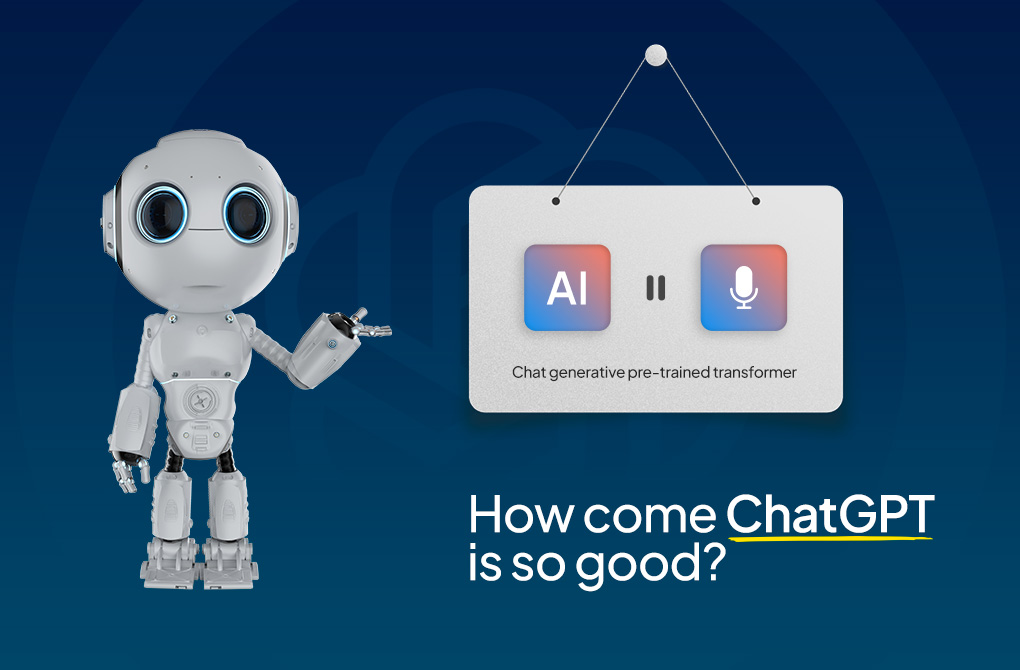ChatGPT – Things You Should Know About AI Chatbot By OpenAI
The general-purpose chatbot prototype known as ChatGPT, which is currently the internet’s preoccupation, has undoubtedly caught your attention by this point. It has already established itself as the best example of the future effects that artificial intelligence-generated content will have, proving the effectiveness of these resources.
It was created by OpenAI, a company well recognized for creating the text-to-image generator DALL-E, and it’s presently accessible for everyone to try out without charge, despite some recent difficulties doing so.
Here, you will find all the information you require on ChatGPT, including user instructions.
Describe ChatGPT
In simple terms, ChatGPT is an AI-powered chatbot created by San Francisco-based startup OpenAI and made accessible to the general public through web browsers. It can be utilized on chat.openai.com, which is its website. LLM, or the large language model, powers ChatGPT. This demonstrates that ChatGPT can understand responses that seem to be coming from humans.
Within a short time, it has started a new global race in the field of AI. Since its debut in November 2022, it has been the topic of conversation in the business world. What makes ChatGPT special? ChatGPT can converse with you as if you were speaking to someone extremely knowledgeable. History, philosophy, culture, and other topics are all fair game for discussion with ChatGPT. In addition, it may assist you to write code and make lyrics for your favorite musician.
How Does ChatGPT Work?

A few of the many applications for ChatGPT include customer assistance, online purchasing, staff hiring and training, streamlining business procedures, and providing more individualized consumer experiences.
ChatGPT can be used to create interactive narrative experiences that let users explore and learn from virtual settings.
ChatGPT has a number of application cases, such as:
- Creating responses for a chatbot or virtual assistant to provide users with more believable and interesting interactions.
- Generating content ideas based on keywords or subjects.
- Developing tailored communications, including email responses or product suggestions.
- Writing blog posts or social media updates for marketing purposes.
- The translation of text between two languages.
- Summarizing lengthy documents by providing the full text and instructing ChatGPT to produce a concise version.
- Using chatbot-generated responses to create automated customer service tools.
ChatGPT can be a terrific tool for you if you’re a business leader searching for ways to simplify content development or give customers a more individualized experience.
What is Its Scope?
With its 175 billion parameters, GPT-3’s performance is difficult to nail down. The model is restricted to language, as one might anticipate. As opposed to its sibling Dall-E 2, it has a profound knowledge of both spoken and written language. However, It cannot produce video, sound, or images.
This provides it with a rather broad range of skills, from creating poems about sentient farts and cliche rom-com in parallel universes to simply describing quantum theories or producing lengthy research papers and articles.
While using OpenAI’s years of research to have an AI write terrible stand-up comedy routines or answer questions about your favorite celebrities can be amusing, the technology’s actual value lies in its rapid processing of complex data.
Instead of spending hours reading, understanding, and writing an article on quantum physics, ChatGPT can produce a well-written substitute.
It has its limitations, and the program can easily become perplexing if your instructions start to become overly complex or even just if you choose a path that becomes a bit too constrained.
Additionally, it struggles with too many modern themes. World events from the preceding year won’t be understood, and the model might occasionally provide incorrect or hazy information.
Additionally, OpenAI is well aware of the internet’s penchant for using AI to create depressing, damaging, or prejudiced content. ChatGPT will discourage you from posing incorrect queries or requesting assistance with risky requests, the same as how its Dall-E image generator did earlier.
How Does It Function?
The technology behind GPT-3 appears to be straightforward. It reacts quickly to your commands, questions, or prompts. As you might think, the technology required to carry this off is much more complicated than it first appears to be.
The model was trained using an internet text database. A startling 570GB of content was contained in this, which was compiled from books, web texts, Wikipedia articles, and other online literature. More specifically, 300 billion words were provided to the program.
As a language model, it employs probability to anticipate what the word that comes after a phrase should be. To get to the point where it could do this, the model underwent supervised testing.
Here, the system was fed inputs like “What color is the wood of a tree?” There is no guarantee that the team will deliver the desired results despite its best efforts. When it errs, the team feeds the correct response back into the program to help it learn from its mistakes and advance its knowledge.
The model is then trained on comparisons by going through a second, comparative stage when various options are presented and team members are asked to rank them from best to worst.
To become the ultimate know-it-all, this technology constantly improves its comprehension of cues and inquiries while making educated guesses about what should follow next.
Think of it as a far more sophisticated, smarter version of the autocomplete feature you frequently see in email clients or writing programs. As soon as you begin typing a sentence, your email client suggests a few words to use.
Do Alternative AI language Generators Exist?
Despite being well-known for its linguistic abilities, GPT-3 is not the only artificial intelligence that can do this. A Google engineer was fired for declaring that LaMDA was so convincing that he believed it to be sentient, which brought attention to LaMDA.
Numerous additional examples of this software are also in use; they were created by companies like Microsoft, Stanford University, Amazon, and others. None of these have received quite as much attention as OpenAI or Google, likely because they don’t contain farting jokes or headlines about sentient AI.
The majority of these models are not accessible to the general public, but OpenAI has started granting access to GPT-3 during its testing process, while Google’s LaMDA is made partially testable by selected parties.
Google’s Chatbot is divided into three categories: chatting, listing, and envisioning, with examples of each category’s functionality. You can ask it to come up with a list of steps to learn to ride a unicycle, picture a world in which snakes are in charge, or just converse with you about what dogs think.
The ChatGPT Application

ChatGPT can be used for a number of different natural language processing tasks. ChatGPT can be used for a number of things, such as:
- Text Generation: ChatGPT can produce text responses that resemble those of humans in response to prompts, making it helpful for building customer service chatbots, producing answers to inquiries in online forums, and even producing customized material for social media posts.
- Language Translation: Tasks involving language translation can also be completed using ChatGPT. When provided a text prompt in both the source language and the destination language, the model can translate the content accurately and naturally.
- Text Summarization: You can use ChatGPT to create summaries of lengthy papers or articles. You can use this to rapidly obtain a general understanding of a book without having to read the whole thing.
- Sentiment Analysis: ChatGPT can be used to determine a text’s emotional tone. In order to increase customer satisfaction, this can be used to assess the tone of customer reviews and determine the general mood and emotion of a piece of writing.
In summary, ChatGPT is a versatile tool that can be used for various natural language processing tasks. The specific application of the model will depend on the demands and objectives of the user.
The ChatGPT Technical Principle
Deep learning algorithms are used by ChatGPT to generate text responses to inquiries. The model is based on the GPT-3 architecture, a transformer model type that uses self-attention techniques to analyze and generate text.
An example of a neural network with multiple layers of interconnected nodes is the GPT-3 design. The network’s nodes are each built to deal with a specific part of the incoming text, such as the overall meaning, the grammatical structure, or the contextual information. The network’s nodes collaborate to create a grammatically sound and sensible response as the input text is transmitted through it.
The ability of the GPT-3 architecture to learn from a lot of data is one of its primary characteristics. A vast collection of text data was utilized to train the ChatGPT model, and it contains information on a variety of subjects and writing styles.
As a result, the model can produce responses that are extremely pertinent to the prompt and that display a degree of knowledge and understanding comparable to that of a human.
Long-range dependencies in the input text can be handled by the GPT-3 architecture, which is another benefit. This is significant since many natural languages tasks, like translation or text summarization, call on the model to comprehend the general meaning and context of the text to produce an accurate response.
The GPT-3 architecture’s self-attention mechanisms enable the model to recognize these distant relationships and to produce precise and fluid responses.
In general, ChatGPT’s technical foundation is the GPT-3 architecture, which creates text response prompts that are human-like through the use of deep learning algorithms and self-attention mechanisms. This gives the model the ability to carry out a variety of natural language tasks, like text production and language translation, with high accuracy and fluency.
If you’re interested in learning how to program in ChatGPT, go to the official websites of OpenAI or ChatGPT Github.
How Come ChatGPT is So Good?

For a number of reasons, ChatGPT is recognized as an excellent tool for projects involving natural language processing. Among the primary motives are:
- Big Size: ChatGPT is a sizable language model that was developed using a significant body of text data. The model may thus generate remarkably accurate and fluent replies to a range of natural language processing tasks.
- Human-like Responses: ChatGPT can produce answers that are extremely pertinent to the prompt and show a level of knowledge and comprehension comparable to that of a human. For tasks like writing texts and translating between languages, this makes the paradigm especially helpful.
- Flexibility: ChatGPT can adapt to various circumstances and scenarios, which makes it appropriate for a variety of applications. If you use the model to create answers to questions in an online forum, for instance, it can produce responses that are pertinent to the subject being discussed.
- Versatility: ChatGPT is a versatile tool that can be used in a range of natural language processing applications. Whether you are a developer trying to design a chatbot or a content creator looking for ideas, ChatGPT can help you produce high-quality text responses fast and effortlessly.
ChatGPT is an excellent tool all around due to its compactness, human-like responses, adaptability, and versatility. These characteristics make it a handy tool for anyone wishing to engage in tasks involving natural language processing.
ChatGPT’s Limitations
ChatGPT has some restrictions and limits, just like any other machine learning model, which users should be aware of. Here are a few potential ChatGPT drawbacks:
- Data Dependence: ChatGPT is a machine learning model that was trained using a significant body of text data. As a result, the quantity and variety of the training data will influence the quality and accuracy of the model’s replies. If the model wasn’t trained on a diverse dataset, it can produce answers that are inaccurate or useless.
- Limited Comprehension: ChatGPT can provide extremely accurate and fluent responses to prompts, but it lacks a comprehensive grasp of the world and the capacity for human-like reasoning. As a result, the model could be unable to come up with answers to questions that are difficult to understand or abstract or to comprehend the significance of a given prompt.
- Bias: Machine learning models, such as ChatGPT, may display bias in their solutions. This can happen if the model’s algorithms are skewed in some way or if it was trained on biased or unrepresentative data. Therefore, ChatGPT users should be aware of the possibility of bias in the model’s responses and take precautions to limit it.
- ChatGPT Error: Due to technical or resource constraints, even artificial intelligence can make blunders. We can take these actions to try and fix the issue if our attempts to access ChatGPT are unsuccessful.
- Try logging in using a new browser or clearing your browser’s cache.
- The login page may eventually succeed if you keep refreshing it.
- Open the OpenAI server to get the most recent maintenance report.
- Click on ChatGPT Error solution if none of the other solutions work.
All things considered, ChatGPT is a powerful and flexible tool for tasks involving natural language processing. Users should be aware of its limits, though, as with any machine learning model.
How Microsoft Intends To Utilise ChatGPT Going Forward?
In its ascent to popularity, OpenAI has received funding from many well-known individuals, including LinkedIn co-founder Reid Hoffman, Elon Musk, and Peter Thiel. One of OpenAI’s major investors, however, will be the first to use the ChatGPT in a practical setting.
Microsoft invested a whopping $1 billion in OpenAI, and the business is now trying to integrate ChatGPT into its search engine Bing. Microsoft has been vying with Google as a search engine for years, trying to come up with any feature that will make it stand apart.
Less than 10% of all online searches conducted worldwide were conducted using Bing in 2016. Even though that may seem insignificant, the fact that Bing is one of the most widely used options is another evidence of Google’s market dominance.
Bing intends to integrate ChatGPT into its platform to comprehend customers’ inquiries more effectively and provide a more conversational search engine.
Although Microsoft’s plans to integrate ChatGPT into Bing are still unknown, there will probably be some testing first. Complete deployment runs the risk of Bing falling victim to GPT-3’s prejudice, which can occasionally dive deeply into political and racial preconceptions.